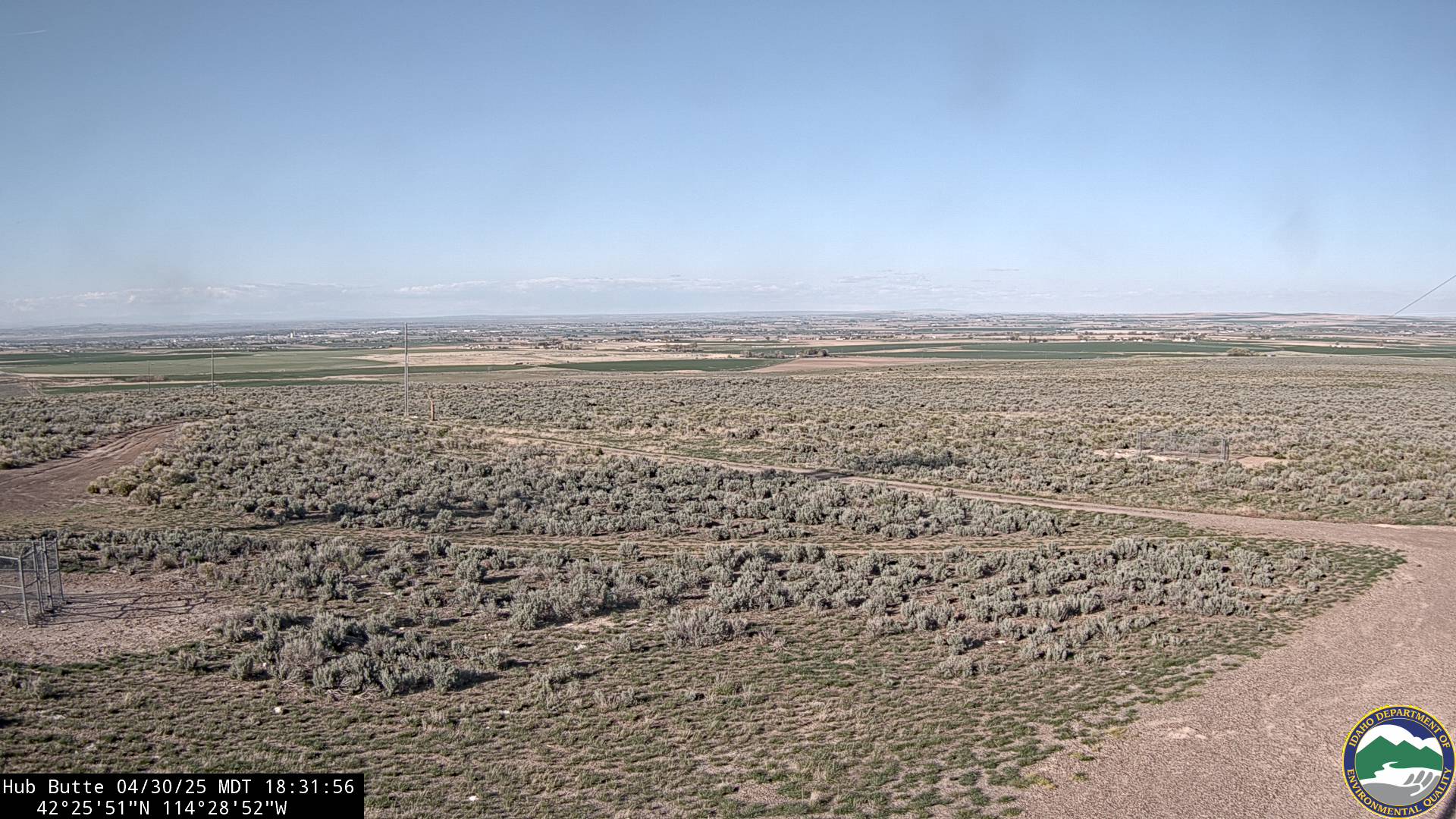Hub Butte, ID Weather Cams
Hub Butte, ID Visibility Camera (Twin Falls County, facing northeast toward Kimberly, ID)

Hub Butte, Idaho: A Legacy of Mining, Settlement, and Transformation
Hub Butte, ID Weather Cams. Nestled in Twin Falls County, Hub Butte, Idaho has a fascinating history shaped by mining, agriculture, and the rugged terrain of south-central Idaho. While it may not be as widely known as other historical sites in the state, Hub Butte played a significant role in the region’s development, particularly during the late 19th and early 20th centuries.
Early Exploration and Mining Boom
The discovery of valuable minerals in the Lava Creek district in the 1880s sparked a mining rush that brought prospectors and entrepreneurs to the area. Among the most notable discoveries was the Hub Mine, found by Jack Hood in 1885 or 1886. Hood, an experienced prospector, had spent years searching for mineral-rich deposits in the Lost River country before uncovering the Hub Mine’s potential.
The Hub Mine quickly attracted attention, leading to a surge in prospecting activity. At its peak, over 800 mining claimswere recorded in the vicinity of Era and Martin, covering nearly every available section of the mountain. Hood eventually sold his stake in the mine for approximately $60,000, a substantial sum at the time. The new owners continued operations intermittently for a decade before leaving the field.
Another significant discovery was the Horn Silver Mine, found by Frank Martin on June 4, 1884. Martin stumbled upon the deposit while traveling across the mountains, striking a rock with his hammer and exposing a ledge of horn silver. News of the strike spread rapidly, and soon, shipments of high-grade ore were sent to Hailey and Blackfoot, then transported to smelters. The mine’s success led to the establishment of the town of Era, which thrived for several years before the mine’s decline.
Settlement and Agricultural Development
While mining was the initial draw, settlers soon recognized the agricultural potential of the surrounding land. The fertile soil and access to water sources made the region suitable for livestock grazing and crop cultivation. Ranchers and farmers established homesteads, contributing to the area’s economic stability.
The Lost River Valley became a key agricultural hub, with ranchers raising cattle and sheep. Hood himself transitioned into the sheep business after selling his mining interests, partnering with Clarence Kinney, a pioneer resident of Antelope. The shift from mining to agriculture reflected a broader trend in Idaho’s development, as communities sought long-term sustainability beyond the boom-and-bust cycles of mineral extraction.
Challenges and Transformations
Like many frontier settlements, Hub Butte and its surrounding areas faced challenges, including economic fluctuations, environmental hardships, and population shifts. As mining activity declined, many prospectors moved on to other opportunities, leaving behind abandoned claims and ghost towns.
The town of Era, once bustling with miners and merchants, gradually faded as the Horn Silver Mine’s output diminished. Similarly, the Hub Mine ceased operations after a decade of intermittent production, marking the end of its prominence in the region. Despite these setbacks, the agricultural sector remained resilient, ensuring that the area continued to support a stable population.
Modern-Day Hub Butte and Legacy
Today, Hub Butte stands as a historical landmark, reflecting the pioneering spirit of Idaho’s early settlers. While mining no longer dominates the landscape, remnants of the past—such as old claims, abandoned structures, and historical records—offer a glimpse into the area’s rich heritage.
The surrounding Twin Falls County remains an important agricultural and economic center, with modern infrastructure supporting farming, ranching, and tourism. Visitors interested in Idaho’s mining history can explore archival materials and historical sites that document the gold and silver rushes that once defined the region.
Hub Butte’s story is one of discovery, transformation, and resilience. From its mining heyday to its agricultural evolution, the area embodies the spirit of exploration and adaptation that shaped Idaho’s frontier. Whether examining its geological significance or tracing the lives of early settlers, Hub Butte remains a testament to the enduring legacy of those who carved out a life in the rugged landscapes of the American West.
For more information, go to the official Grangeville, ID web site.
